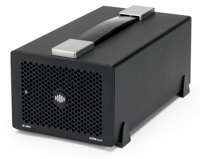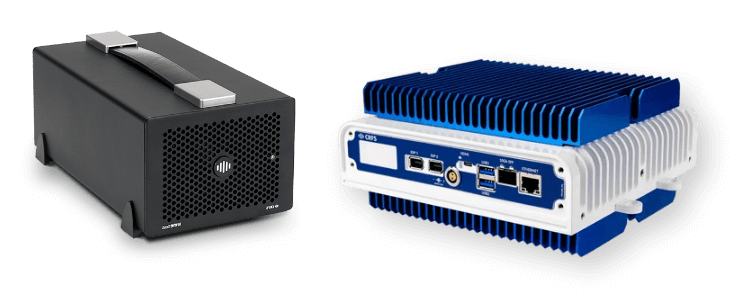Lightweight, portable I/Q recorder for high-fidelity, long-duration RF recording, and signal extraction.

Continuously record or stream signals of interest in high-fidelity to maximize your intelligence picture & exploit the electromagnetic environment


HARDWARE OVERVIEW
Capture signals of interest in the field over extended periods in high fidelity and later analyze those signals in the lab.

Stream or record 100MHz of I/Q data for enhanced probability of intercept (POI)
Connection via a rugged fiber 10GigE cable and stream in VITA-49 for real-time signals intelligence
Record high-fidelity I/Q data for multiple days for forensic signal analysis in post-processing
Stream in real-time or capture data to detect and intercept LPI & LPD signals
Adapt to any mission with mobile, fixed, or autonomous platform deployments
Ultra-fast processing ensures enhanced TDoA and multi-mission flexibility
Learn more about RFeye DeepView our forensic signal analysis software

BOOK A DEMO

VIDEO

Use RFeye DeepView to gain signals intelligence and a deeper understanding of the electromagnetic environment


How a renowned R&D company recorded I/Q data in the field without bulky lab equipment.
Read the storyHow a national force secured its borders with reliable spectrum data.
Read the storyI/Q data stands for in-phase and quadrature data. I/Q data is used to represent sinusoidal signals in the form of two components: the in-phase component and the quadrature component. The in-phase component represents the cosine of the signal, while the quadrature component represents the sine of the signal. This data can be used in a variety of applications, including radio frequency systems.
RF recording (or radio frequency recording) is a way to record audio using radio frequencies. This method is commonly used for radio broadcasts and other audio recordings that require a higher sound quality than a standard microphone.
I/Q recording is a method of digital recording that captures the amplitude and phase of a signal at the same time. It is used in many applications, including radio frequency testing and measurement.
I/Q data in RF is a type of digital modulation used in radio transmission. It stands for "In-phase/Quadrature" and is a type of complex modulation that combines two separate amplitude-modulated (AM) signals. The two signals used in I/Q modulation are in phase and quadrature, which means that one signal is shifted in phase by 90 degrees. This creates a phase differential between the two signals, which is used to encode the data being sent. I/Q data is often used in primary / Land Mobile Radio (trunked) communications and military communications.
I/Q signal processing is a communication system that utilizes a signal's in-phase (I) and quadrature (Q) components to achieve efficient transmission. It is commonly used in radio frequency (RF) systems to enable reliable and accurate transmission of data.
I/Q data signal processing is a type of digital signal processing in which the signal is represented as a complex baseband signal. This technique is used in various applications, such as communication systems, radar systems, sonar systems, and medical imaging systems.
I/Q data is used to represent the amplitude and phase of a signal and is used in many types of communication systems. It is commonly used to represent baseband or passband signals, such as those used in radio and television broadcasting. Additionally, I/Q data can be used for data acquisition and analysis purposes.
I/Q modulation is a form of digital modulation that encodes data by modulating the amplitude, phase, or frequency of a carrier wave. It is used to represent digital information and is typically used in radio transmission and receiver systems. In I/Q modulation, each data symbol is represented by two components, the in-phase (I) and quadrature (Q) components. The I component is the cosine component, while the Q component is the sine component. The data is processed and encoded in the I/Q components, which are then combined to form a composite signal. The composite signal is then transmitted to the receiver, where it is decoded to reconstruct the original data.
I/Q modulation is an important technique used in communications engineering, which is used for the purpose of transferring information between two points. It is used in many different applications, such as radio and television broadcasting, cellular networks, and satellite communications. Additionally, it can be used in many different products, such as radios, television receivers, and other consumer electronics. I/Q modulation provides a reliable way to send and receive signals across a variety of mediums, making it a popular choice for many different applications.